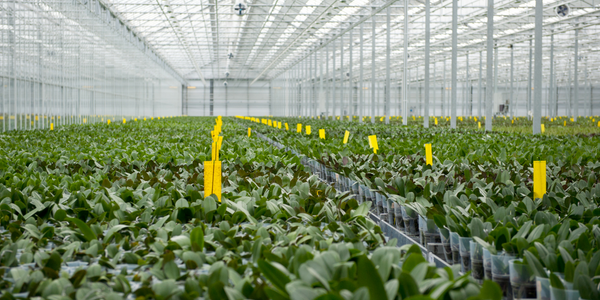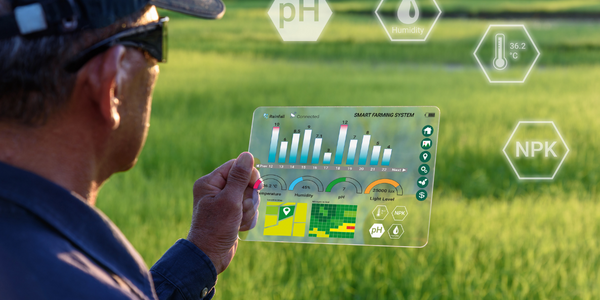Download PDF
A Case Study in Global Supply Chain Risk Management: How AGCO Implemented an SCRM Solution to Save Millions
Technology Category
- Analytics & Modeling - Big Data Analytics
- Functional Applications - Enterprise Resource Planning Systems (ERP)
- Platform as a Service (PaaS) - Data Management Platforms
Applicable Industries
- Agriculture
Applicable Functions
- Procurement
Use Cases
- Supply Chain Visibility
Services
- System Integration
- Data Science Services
- Training
The Challenge
AGCO faced significant challenges in managing its fragmented procurement function, which was spread across multiple business units. External events such as earthquakes disrupted the supply base, leading to a lack of teamwork and collaboration among buyers. This resulted in internal competition for the same suppliers, causing inefficiencies and increased costs. The company recognized the need for a more effective approach to secure supplier capacity and mitigate risks, prompting a shift towards a center-led Supply Chain Risk Management (SCRM) strategy.
About The Customer
AGCO is a global manufacturer of agricultural machinery based in Duluth, Georgia. The company has a rich history, tracing its roots back 100 years, and was officially formed 25 years ago. AGCO operates primarily in North America, Brazil, Western Europe, China, and India. With an addressable procurement spend of around $7 billion, AGCO's procurement organization comprises about 250 people, managing 25 direct commodities and working with approximately 6,000 suppliers. The company's procurement function was previously fragmented across multiple business units, leading to challenges in managing external disruptions and supplier relationships.
The Solution
AGCO implemented a comprehensive SCRM solution developed by riskmethods. The solution included internal organizational changes, such as adopting a matrix structure with category owners having regional or cross-enterprise roles. A risk manager position was created, and supply base analysis was conducted to develop suitable risk mitigation strategies. Supporting software tools enabled automated visibility and risk analysis. The new approach integrated SCRM and Supply Risk Network into daily operations, providing 100% automation, multi-tier supply base visibility, and full visibility of various risks. The solution also included mobile technology and high user acceptance through ease of use.
Operational Impact
Quantitative Benefit
Related Case Studies.

Case Study
Intelligent Farming with ThingWorx Analytics
Z Farms was facing three challenges: costly irrigation systems with water as a limited resource, narrow optimal ranges of soil moisture for growth with difficult maintenance and farm operators could not simply turn on irrigation systems like a faucet.

Case Study
Greenhouse Intelligent Monitoring and Control Solution
Farming Orchids is the most successful form of precision farming in Taiwan, and also the most exported flower. Orchids need a specific temperature and humidity conditions to grow and bloom, and its flowering time may not be in line with market demands, so the price collapses when there is overproduction. Therefore, some farmers began to import automated greenhouse control systems for breeding and forcing, which not only improves quality, but also effectively controls the production period and yield to ensure revenue. In 2012, an orchid farmer built a Forcing Greenhouse of about 200 pings (approximately 661 Square Meters) in Tainan, Taiwan. The system integrator adopted Advantech’s APAX-5000 series programmable automation controllers to build the control platform, coupled with Advantech WebAccess HMI/SCADA software, to achieve cloud monitoring. The staff of the orchid field can monitor important data anytime via smart phone, iPad, and other handheld devices, and control the growth and flowering conditions. System requirements: In the past, most environmental control systems of orchid greenhouses in Taiwan used PLCs (Programmable Logic Controller) with poorscalability and control, and could not be connected to the Internet formonitoring from the cloud. For advanced database analysis and networking capability, the PC platform must be adopted. Therefore, PAC Systems (Programmable Automation Controller) with both PLC programming capabilities andPC functions is a better choice.The environmental control of the Orchid greenhouse switches on and off devices like fan, shade net, cooling/heat pump, liquid flow control, water-cooling wall etc. It is controlled by a control panel of electric controllers, and is driven by a motor, to adjust the greenhouse temperature, humidity, and other environmental conditions to the set parameters.

Case Study
Enabling Internet of Things Innovation in Agriculture
DigiBale, wanted to apply technology know-how and IP from implementations successfully to more agriculture sectors including cotton, forestry, sugarcane and cattle. However, farmers and growers still have worries about the connected technology.

Case Study
Precision beekeeping with wireless temperature monitoring
Honeybees are insects of large economic value and provide a vital service to agriculture by pollinating a variety of crops. In addition, bees provide us with valuable products such as honey, beeswax, propolis, bee venom, etc. Monitoring of honeybee colony health, population, productivity, and environmental conditions affecting the colony health have always been exceedingly difficult tasks in apiculture. Research has shown that even small deviations (by more than 2°C) from the optimal temperatures have a significant influence on the development of the brood and the health of adult bees.






